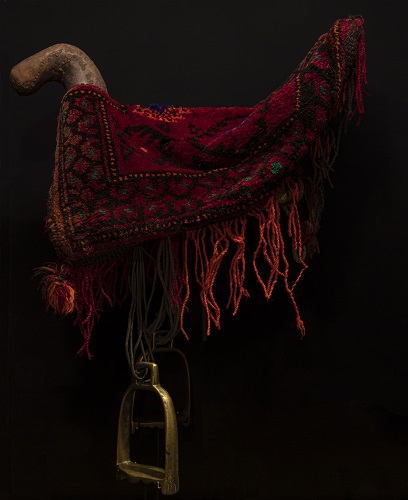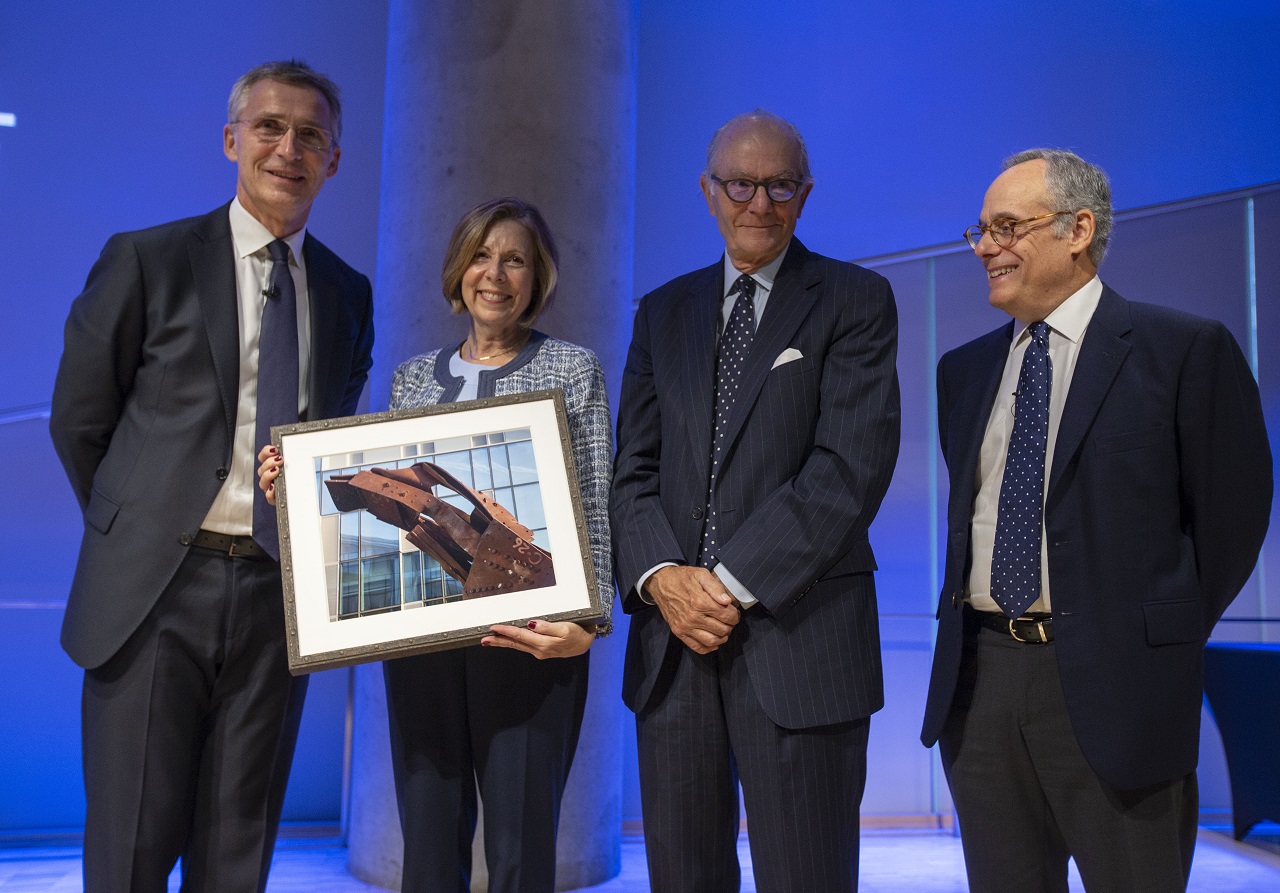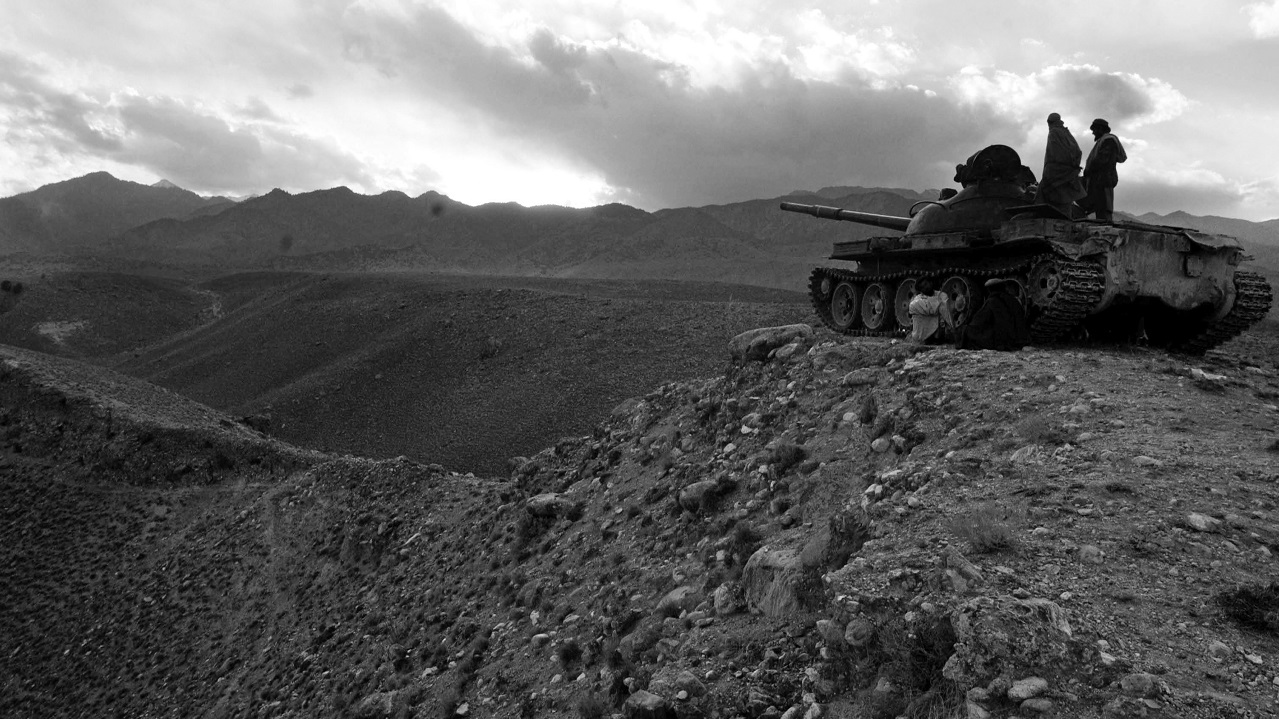International Community Responds
The day after 9/11, the North Atlantic Treaty Organization (NATO) invoked Article 5 from its 1949 founding treaty, stating that an armed attack against one member was an attack against all.
On April 4, 1949, representatives from 12 North American and Western European countries, including the United States, signed a treaty that founded the North Atlantic Treaty Organization (NATO). In the wake of World War II, these countries allied, in part, to ensure that the Soviet Union did not expand its control into Western Europe. Although the treaty has 14 articles, Article 5, with its notion of solidarity and promise of collective defense, is considered the heart of the alliance. It states, “An armed attack against one or more of them . . . shall be considered an attack on them all.” Additionally, it notes that in the event of an armed attack, each country “will assist the Party or Parties so attacked by taking . . . action as it deems necessary, including the use of armed force, to restore and maintain the security of the North Atlantic area.”
On September 12, 2001, the day after the 9/11 attacks, NATO met in an emergency session. For the first and only time in its history, NATO invoked Article 5. All 18 of the United States’s allies stated they would support America’s response to the attacks.
Jens
Read the transcript of Stoltenberg’s remarks.
On September 17, 2001, U.S. President George W. Bush authorized the CIA to launch operations in Afghanistan against al-Qaeda and its ally, the ruling Taliban government. Nine days later, a CIA team known as the Northern Alliance Liaison Team and code-named Jawbreaker became the first Americans to land behind enemy lines. Their mission was to work with Afghan militias resisting Taliban rule and to collect intelligence for subsequent U.S. and international military operations. This work became the front line of American efforts to overthrow the Taliban, a strategy designed to deprive al-Qaeda of its sanctuary.
The painting below commemorates the CIA’s early operations with Afghan allies. It depicts a CIA paramilitary force on a nighttime mission in Afghanistan.

Cast of a Few, Courage of a Nation, 2008, James Dietz (American, b. 1946), oil on canvas, Courtesy of the CIA Museum
alt

Saddle and cover used by U.S. Special Forces officer in Afghanistan after 9/11. Courtesy of Mark Nutsch.
The U.S. military began operations in Afghanistan on October 7, 2001, as part of Operation Enduring Freedom. A group of Green Berets, the U.S. Army’s Special Forces, landed in Afghanistan on October 19 with a mission to support Afghan militias resisting Taliban rule. Adapting to the local culture and terrain, the Green Berets traveled on horseback. These “horse soldiers” laid a foundation for the arrival of additional U.S. troops and international troops.
By December 2001, intelligence and military forces had tracked Osama bin Laden to where he had strategically retreated with al-Qaeda fighters: the Tora Bora cave complex in Afghanistan’s Spīn Ghar mountain range. Over the course of several weeks, U.S. and allied forces attacked Tora Bora. After intense air strikes produced many casualties, al-Qaeda offered a cease-fire. Bin Laden and many of his fighters fled through unguarded mountain paths. Bin Laden’s successful flight has been attributed to a lack of ground troops deployed along potential escape routes. The next confirmed American sighting of bin Laden would not come until nearly 10 years later, at a compound in Abbottabad, Pakistan, where the al-Qaeda leader was hiding.
Since 2001, troops from the U.S.'s NATO allies have stood shoulder to shoulder with American soldiers in Afghanistan. More than one thousand of these soldiers have paid the ultimate price. In 2017, NATO inaugurated its new headquarters in Brussels, Belgium. Near its entrance, a memorial composed of a piece of mangled steel from the 107th floor of the World Trade Center's North Tower sits atop a pedestal. In front of it, an inscription on a plaque pays tribute to the singular use of Article 5 of NATO’s founding treaty. During a public program at the National September 11 Memorial & Museum, Jens Stoltenberg, the current NATO Secretary General, reflected on the memorial. He remarked, “It serves as a powerful symbol of the enduring partnership and friendship between the United States and its NATO Allies across Europe and Canada. It is also a daily reminder of the deadly dangers posed by terrorism, the importance of standing together to protect our people and our values.”

NATO Secretary General Jens Stoltenberg (far left) presents 9/11 Memorial & Museum officials with a framed photograph of the 9/11 and Article 5 Memorial. Receiving the gift are (left to right) Alice M. Greenwald, President and CEO; Andrew M. Senchak, Board of Trustees member; and Clifford Chanin, Executive Vice President and Deputy Director for Museum Programs. Photo by Jin S. Lee.
